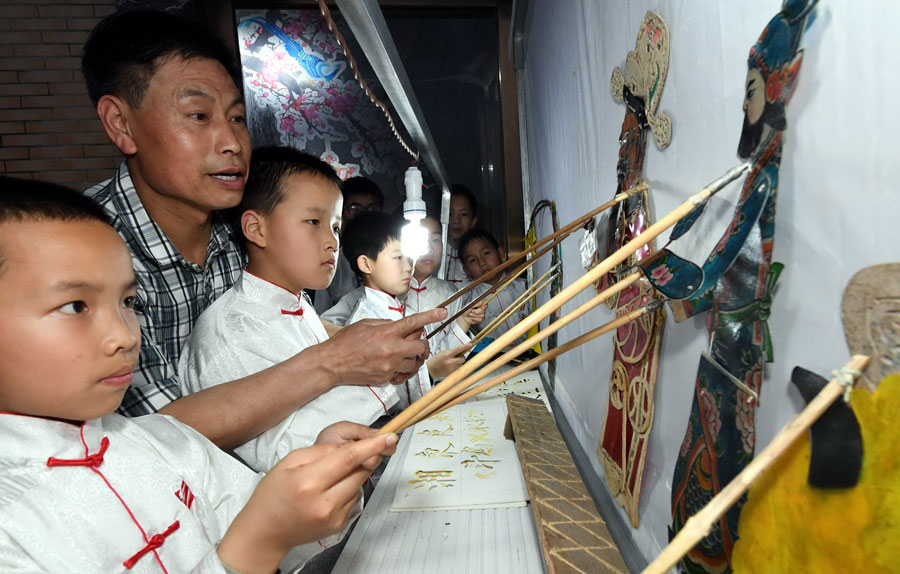
NANCHANG - Standing behind a white curtain amid the dramatic sound of drums, Ding Yongfa manipulates silhouette figures to tell the story of a corrupt official brought to justice.
The traditional Chinese shadow puppet performance - with figures made from cowhide - shows how Yan Peitian, a righteous official, fought a corrupt peer during the Qing Dynasty (1644-1911).
Behind the curtain is the soul of the performance, the puppeteer who uses his flexible hands and voice to make the small figures stroke their beards, nod their heads, wave their hands and curse others.
"This story is my latest creation," said Ding, 55, from Xiangdong village, in Pingxiang, Jiangxi province. "It tells how a local official named Yan Peitian in Xiangdong fights one of his peers who cruelly tortured innocent people."
Ding said he wants to use the puppets to highlight the anti-corruption drive going on in China.
"The public welcomes the campaign against corruption, and I thought it would be a good way to show the campaign through art."
The anti-graft campaign is gaining momentum in China. In August, 7,846 officials were punished for violating the Party's eight-point frugality code, according to the top anti-graft body of the Communist Party of China.
It is under such circumstances that Ding came up with the idea of exposing corruption via shadow puppet performances.
"I can not only pass on the traditional art but also help spread education against corruption among the public," he said.
Shadow puppetry has a long history. Ancient Chinese historical records show that shadow puppet plays were created by a Chinese Taoist during the Han Dynasty (206 BC-AD 220) to console Emperor Wu, who was heartbroken after losing one of his concubines. The Taoist made a stone image of the concubine and projected it in a tent with candlelight. The shadow looked so vivid that it helped the emperor overcome his grief.
Over the next 2,000 years, the stone figures were gradually replaced by cowhide ones, and the tents were turned into curtains. Performers then added drum sounds and Chinese opera to accompany the movement of the figures, and the shadow play was born.
In Xiangdong, where the art has developed for more than 200 years, Ding is a fifth-generation inheritor of shadow puppetry, having started to learn the art at the age of 11.
"He is a master of shadow puppetry, and we thought the idea of combining the art with an anti-graft theme would be a good idea," said local discipline inspection official Huang Yunzhang.
"To make the anti-graft education more understandable and enjoyable, we supported Ding's idea, and provided whatever sources he needed," Huang said.
Ding spent more than two months creating the script and developing it into a show. He also made a short film about the story and put it online.
Local officials helped Ding develop the story into different sections, which were all put into shadow puppet performances.
But Ding's current success did not come easy.
As modern home entertainment devices like TV sets and radios became popular, the traditional art form gradually lost its appeal among the younger generation.
"During the worst times, I could only perform a few times a year because nobody invited me," Ding recalled.
In June 2011, China issued a law protecting intangible cultural heritage. In the same year, shadow puppetry was put on a list of intangible cultural heritage by UNESCO.
To help with the art's revival, local authorities in Xiangdong purchased modern stereo systems, electronic musical instruments and caption-generating machines.
Ding said it is important to pass on the traditional art in new forms.
"We should follow the tide of the new era and revitalize shadow puppetry," he said.
Xinhuaaily 10/11/2018 page5)
